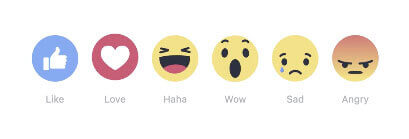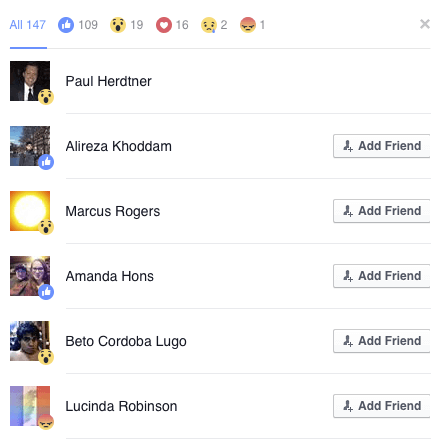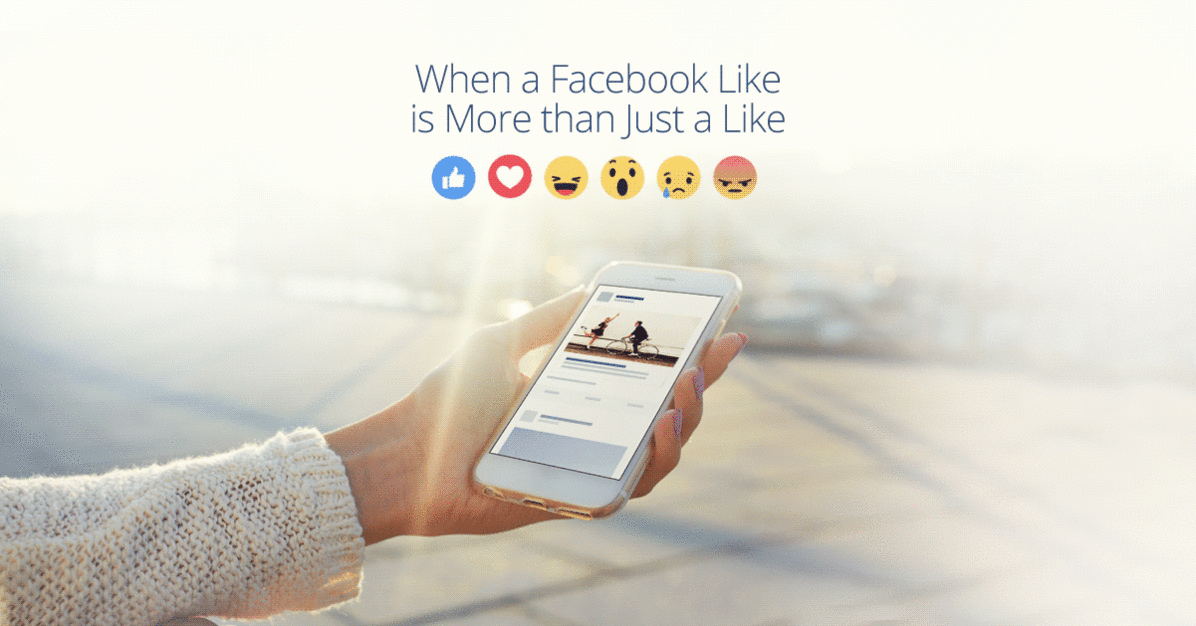Did you feel it?
That rumble beneath our collective feet yesterday was Facebook finally rolling out an assortment of feedback icons to enhance the tried-and-true Like. We’ve known for a while it was coming, but now it’s here and reality.
The Like has been the most popular user reaction since the thumbs-up first appeared in 2009, but now there’s this array of selections:

In addition to the big, blue thumbs-up Facebook Likes icon, there’s the heart for “love”; a laughing emoji for “Haha”; a bewildered-looking emoji for “Wow”; an emoji with a tear on its little yellow cheek for “Sad” and a red-faced emoji for “Angry”.
For years, Mark Zuckerberg resisted adding additional reactions, especially a thumbs-down icon, saying he didn’t want to add negativity via the social network. So he didn’t. But now we have an array of new Facebook Likes choices that will provide deeper insight into what we think about the content in the News Feed.
What Do Reactions Mean for Brands?
Initially, you might not think this means a lot when it comes to Facebook advertisers. But this is where a Like becomes far more than a Like: in real-time, brands can get metrics from the audience that go beyond the generic Like, or alternatively, simple indifference.
Now, when users watch a video featuring the new Honda, they can love it, or show their appreciation for its humor, or marvel at its performance, or even show anger over it.
To make things more interesting, if you click on one of the new icons—called Reactions, as it turns out—or the number of users who engaged with one of the emojis, you can see all the people who expressed themselves one way or another. It looks like this:

Reactions will also help to fine-tune the Facebook algorithm in a variety of ways—but they’ll also raise questions: will we see less coverage of a particular politician if we click the “Sad” or “Angry” emojis too often on related articles? Will the News Feed become one long cat video for people who like such content? As with any of Facebook’s changes, you can probably count on the platform and its algorithms striking something of a balance, just like with the volume of advertising versus organic content.
Jumping on the Bandwagon Early
As Adweek first reported yesterday, Chevrolet is going all-in with the new additions to the Like button with the debut of an ad emphasizing that some things—like the all-new 2016 Malibu—need to be Loved, not just Liked.
https://youtube.com/watch?v=5gPrAIr5ULw
Measuring Reactions
For brands and their Page admins, they’ve already started seeing numbers in their Insights dashboards—and for now, according to Facebook, Reactions will be on the page content level, and won’t get an organic versus paid breakout. (There will be upgrades to Insights down the road, though.)
Reactions are a massive change to the way Facebook does things, and users will no doubt appreciate the versatility they now have.
On a personal note, if you’re reading this blog from a link on Facebook, don’t save all your love for the new Chevy, OK?
